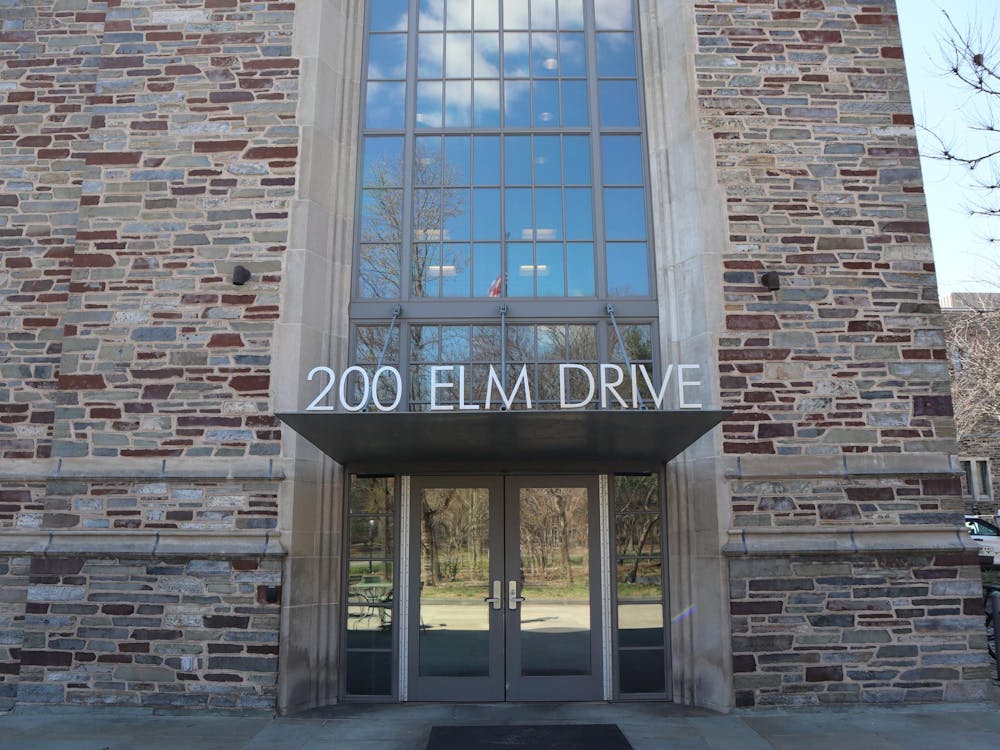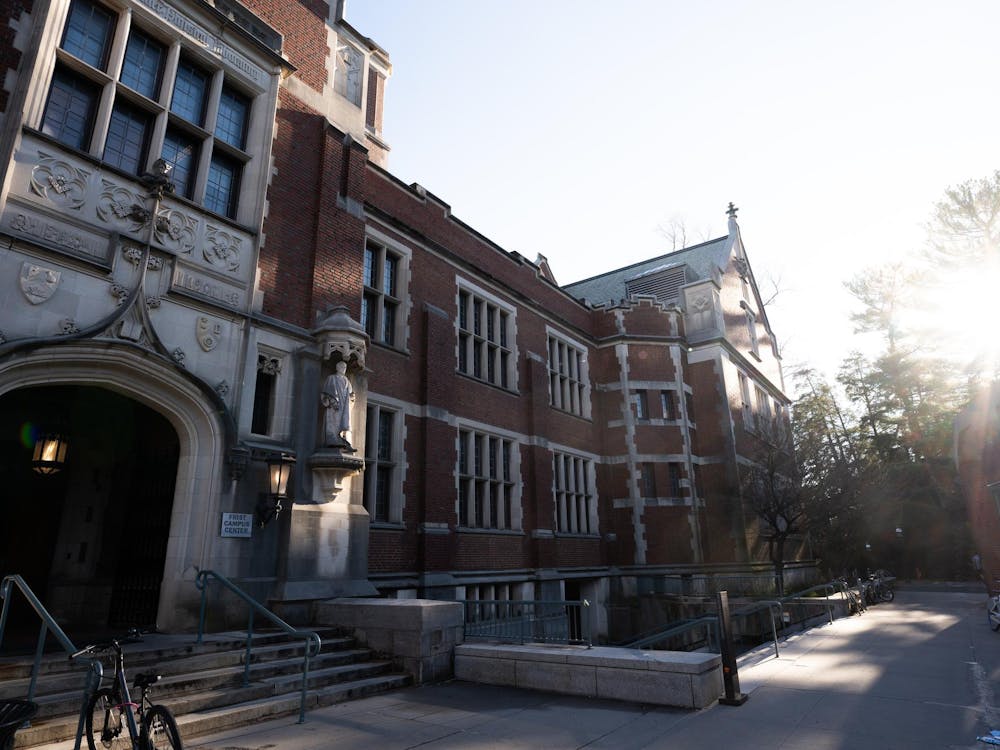“The Princeton son does not have to compete against non-Princeton sons,” the Alumni Council assured. “No matter how many other boys apply, the Princeton son is judged from an academic standpoint solely on this one question: Can he be expected to graduate? If so, he’s admitted. If not, he’s not admitted. It’s as simple as that.”
That year, 70 percent of legacy applicants would make the grade, while only 35 percent of non-legacies could say the same.
The pamphlet proudly demonstrated that the University was “as lenient as possible,” noting that 50 percent of the bottom academic quarter of that year’s freshman class were Princeton sons, as were five of the nine freshmen who failed at midyear, which was “a far higher percentage than their representation in the class.”
Five decades later, admission has become much more competitive for all applicants, but legacies are still admitted at a significantly higher rate.
For the Class of 2013, the University admitted 42 percent of legacy applicants, who made up 2.5 percent of the total applicant pool, compared with nine percent of non-legacies — a difference in admission rates of 33 percent. This is only a slight drop-off from the roughly 35 percent difference in admission rates in 1958.
But while the statistical difference remains, the Office of Admission’s official policy has changed dramatically.
A legacy applicant is now viewed, “first and foremost, on his or her academic performance,” Dean of Admission Janet Rapelye said in an e-mail, emphasizing that the size of the applicant pool forces her office to reject many students with outstanding credentials, whether these students are legacies or not.
Applicants who have “significant family ties to the University … are evaluated in the same rigorous review as every applicant,” Rapelye explained. “We assess the applicant and not the parent. In a small number of cases we do take into account the nature of a family’s ties to Princeton.”
The University has admitted between 34 and 47 percent of legacy applicants over the last 17 years, maintaining the proportion of the class made up of alumni children at a steady 10–15 percent, Rapelye said.
The decrease in preference afforded to legacy applicants in college admissions coincides with an increased emphasis on diversity. “It’s been a gradual move towards meritocracy in college admissions,” explained Anne Hall, director of college guidance at Episcopal Academy, a private school in the Philadelphia area. “If [Princeton] gives too much of a nod to legacy admissions, it’s not going to diversify as much as it would like.”
Hall said that legacy status may be a factor in admissions when two applicants are fairly equally qualified in other areas. “At some point in time, a legacy breaks the tie because an institution wants to be loyal, naturally, to the people who have been part of its family,” she explained.
But Walter Lippincott ’60, a legacy and the father of two Princeton graduates, said he feels the loyalty factor doesn’t count for much today. “It certainly helped a lot to be a legacy back in the late 1950s,” he said. “Today I think legacies are almost … if there is an advantage, it is an extremely tiny one.”

Kyle, a legacy upperclassman whose name has been changed for this article, thinks differently. For some applicants, legacy preference carries significant weight, he argued.
“Honestly, I think the anxiety of the admissions process is one thing you do get a bit removed from as a legacy,” Kyle said. He said he thought that Princeton admission standards were obvious — a 2100 SAT score, a 3.7 unweighted GPA, four or five AP classes — and that applicants simply needed a “hook” to get them in. Kyle’s hook, he said, was his family’s connection to campus.
Princeton’s consideration of legacy status in admissions dates back to at least the 1920s.
As the applicant pool grew larger and more ethnically diverse in the 1920s, the University began assessing applicants for qualities beyond their intellect, explained Jerome Karabel in his book on the history of Ivy League admissions, “The Chosen.” The admission office also considered “manhood qualifications,” “physical qualifications,” “race and nationality” and finally “home influences” — whether or not they were alumni sons.
“In its efforts to screen out ‘undesirables’ and to attract the ‘right’ kind of young men, the Office of Admissions received powerful assistance from Princeton’s public image and from the student culture supporting it,” Karabel wrote.
This public image was a source of contention on campus — since the late 1800s, Princeton had been perceived as elitist and academically lax. Author Upton Sinclair candidly described the Princeton of the era as “the most perfect school of snobbery in America.”
Even then-University president Francis Landey Patton, who led the administration from 1888 to 1902, denigrated the University’s academic standards at a faculty meeting. “Gentlemen, whether we like it or not, we shall have to recognize that Princeton is a rich man’s college — and that rich men do not frequently come to college to study,” he said, as detailed by William Selden ’34 in the book, “Club Life at Princeton: An Historical Account of the Eating Clubs at Princeton University.”
Princeton continued to draw students from a narrow segment of America’s privileged class. In the midst of the Great Depression, 85 percent of the Class of 1932 attended prep schools and two-thirds were legacies, Karabel wrote.
Only after World War II did the University begin its slow path toward meritocracy. A huge post-war increase in highly qualified applicants meant that the old policies were no longer viable. The University responded by admitting more public school applicants and black students.
But even as the University increased its geographic and secondary school diversity, students continued to embody the old-boy culture long identified with Princeton — and sons of alumni were, Karabel wrote, heavily overrepresented.
In 1962, when E. Alden Dunham ’53 was elected director of admission, the baby boom further increased competition for spots at the University, Karabel wrote. The policy outlined by the Alumni Council pamphlet was forcing the admission office to turn away far more qualified applicants, and the University was losing some of the country’s top scholars to Harvard and Yale.
Landon Jones ’66 was frank about the academic capabilities of some of his legacy schoolmates. “For some of them, there would be no question that they might not otherwise have been admitted,” he said.
Strained by significant pressure to admit more top scholars — Princeton was nationally ranked “an abysmal tenth,” Karabel wrote — Dunham cut the admission rate for legacies from two-thirds to 47 percent.
After the legacy admission rate crept up to 56 percent in 1968, then-admission director Timothy Callard ’63 moved in the mid-1970s to institute the general framework that has continued up until today. Under the new framework, admission officers considered each applicant’s personal and academic characteristics, offering advantages to historically underrepresented minorities, legacies and athletes. The system, Karabel wrote, had important institutional rewards: It “permitted gatekeepers to balance interest groups against one another in selecting a class.” Under an increasingly merit-driven admissions regime, there was more opportunity for the middle class and for non-legacy applicants — two traits that often went hand-in-hand — to gain admission to Princeton.
Still, legacy status remains a “hook” in the admissions process. And with increasing competition for all applicants, the difference in acceptance rates has become more pronounced. Legacies were accepted at twice the rate of non-legacies in the days of the pamphlet. But today, legacies are accepted at roughly four times the rate of non-legacies.
One of the most persuasive arguments for favoring legacies has always been that Princeton’s economic wellbeing is tied to its alumni and Annual Giving Program.
“All institutions of learning, as well as other institutions, have responsibilities for meeting financial goals and maintaining financial health,” said Pamela Fetters, director of college counseling at The Lovett School, a private school in Atlanta. “Institutions have institutional interests.” Before moving to The Lovett School, Fetters was a college counselor at The Baldwin School, a private girls’ school in Bryn Mawr, Pa.
The children of celebrities and the very wealthy — legacy or not — get a boost in admissions, Fetters explained.
“It does seem like the squeaky wheel gets the oil,” said Christie Reed ’93, a former college counselor at The Baldwin School. “Pure legacy has gotten to the point where I feel that it isn’t even enough — you actually have to be a very active alum for it to carry weight.”
But the current fierce competition for places at elite universities like Princeton may mean that the advantage is less significant than it once was, even for legacies of significant economic privilege.
“Princeton is not going to take a student who the admissions committee feels is not going to be able to perform or is not going to feel good about being a member of the community because he or she can’t do the work,” Fetters said. “Everybody recognizes that [wealthy legacies] may have an extra boost, but I would say in this day and age they’re not shoo-ins either.”
Reed noted that selective universities do a good job of screening legacy applicants — even the wealthiest ones. “If you get C’s, they don’t care how much your parents have,” she said.
Legacy performance
“Most of them are really, really smart. Like, terrifyingly smart.”
This is how Jun Koh ’11, herself the child of an alumnus, sums up the academic capabilities of the legacies she has come across in her time at the University.
A common criticism of the system that gives preference to alumni children is that the admission office sets up unqualified students for academic failure, placing them in situations where they are ill-prepared to compete.
But the results of a 2007 study on affirmative action and academic performance by Wilson School professor Douglas Massey GS ’78 and Margarita Mooney GS ’05, a sociology professor at the University of North Carolina, Chapel Hill, revealed that students at 28 elite universities who were likely beneficiaries of legacy preference perform just as well as their non-legacy peers.
Of the groups receiving preferential admissions, legacies appear to do the best academically. According to the study, legacies’ average GPA is 3.26 over the first two years of college, ahead of athletes at 3.12 and underrepresented minorities at 3.05.
A 2004 study examining admission at an unnamed group of top-tier private research universities by sociology professor Thomas Espenshade GS ’72 found that while legacies have a marginally lower class rank on average than non-legacies, the difference of only two or three percentage points is not statistically significant.
“I don’t ever remember an instance where a legacy was admitted to any college where the student was not capable of being successful at the school,” Reed said. “I never went, ‘Wow, really?’ ”
Most of the people interviewed for this article agreed that legacies at Princeton are just as highly motivated as their non-legacy peers.
“I can’t imagine why the screw-off rate would be any higher for legacies than non-legacies,” Lippincott said. “There’s a lot of incentive for you to do well at Princeton, and it’s better to have an honors degree than a non-honors degree.”
But the study by Massey and Mooney revealed that the greater the gap between an individual legacy student’s SAT score and the institutional average, the lower the grades earned by the student.
Some noted that there is the occasional legacy admit who is not academically up to par.
“There were some surprises,” Reed said of some applicants to elite universities from The Baldwin School. She explained that while she never thought schools lowered their standards to the point of admitting an unqualified candidate, admissions decisions didn’t always make sense.
“I think that there are students who would not get in without the extra push of athletics or legacy, or ‘institutional interests’ when talking about large donors,” Fetters said. In some instances, she added, universities use what the admissions world calls the “courtesy waitlist” — when an applicant is waitlisted as “a kind of softening of the blow to parents who attended that university” — even though the applicant will likely not gain admission.
With no clear guarantees in college admissions, and with the huge increase in applications to selective universities such as Princeton in recent years, Fetters said she believes that students should think and talk about the system rather than feed into unfounded resentments that “don’t get anybody anywhere.”
“[Legacy preference in admission] will be controversial, and it should continue to be,” she said. “If students and college counselors see what they perceive to be a blatant abuse of the system, I think they should bring it to the attention of the university.”
This is the second article in a three-part series on legacies. Friday: A look at the alumni perspective on legacy admissions.








